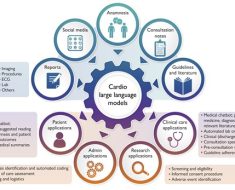With the rapid progression of technology, AI and machine learning have emerged as powerful tools in a wide range of fields. One such field is anomaly detection in traffic networks. The rise in digital connectivity and the increasing complexity of traffic networks have necessitated the development of efficient and accurate anomaly detection systems. This article discusses the use of an unsupervised neural network – the autoencoder, specifically the Mirror Temporal Graph Autoencoder (MTGAE), to identify and address anomalies in traffic networks.
The MTGAE Framework
MTGAE is an innovative neural network that consists of two primary modules – the Mirror Temporal Convolutional Module (MTCM) and the Graph Convolutional Neural Network Recurrent Cell (GCGRU CELL). These modules work in tandem to detect anomalies in traffic networks by identifying abnormal information and potential anomalies in the complex interdependencies among nodes in these networks.
The MTGAE network employs an encoder process that comprises three steps – the adaptive process, MTCM, and GCGRU CELL. The adaptive process and the MTCM enhance the feature extraction capabilities of the system, enabling it to capture hidden node-to-node features in the traffic network. On the other hand, the GCGRU CELL module identifies anomalous information and potential anomalies within the complex interdependencies of the traffic network.
Enhancing Anomaly Detection Capability
The use of the Gaussian kernel module and the Graph Convolutional Network (GCN) layer further enhances the anomaly detection capability of the MTGAE system. These elements allow the system to capture long-term temporal correlations, spatial characteristics, and abnormal node behaviors in datasets with high periodicity and trends.
Additionally, the system employs a Graph Embedding (GE) module and a decoder to recover edge weights for anomaly detection. This duo allows the system to identify and flag potential anomalies that could otherwise go unnoticed.
Evaluating the Model
Any model is only as good as its performance. Thus, evaluating the performance of the MTGAE model is of utmost importance. This is done using Mean Squared Error (MSE) as the loss function. MSE is a popular metric for regression models, and its use in this context allows for an accurate assessment of the model’s performance in real-world scenarios.
The Broader Context
The use of autoencoders for anomaly detection isn’t limited to traffic networks. Other related fields, such as industrial networks and video surveillance, have also started leveraging the power of autoencoders. For instance, a fusion of VGG16 and MobileNetV2-based feature extraction with a denoising autoencoder and U-Net architecture has demonstrated excellent performance in video anomaly detection, with a precision of 91% and overall accuracy of around 80%.
In another instance, spatio-temporal autoencoders and convolutional LSTM networks have been used to enhance video anomaly detection, especially in crowded settings. Such innovative approaches are a testament to the potential of autoencoders in transforming anomaly detection across diverse fields.
With the increasing reliance on digital networks, the importance of efficient and accurate anomaly detection systems cannot be overstated. In this context, the use of autoencoders, such as the MTGAE, offers promising prospects for improving anomaly detection in traffic networks and beyond.



